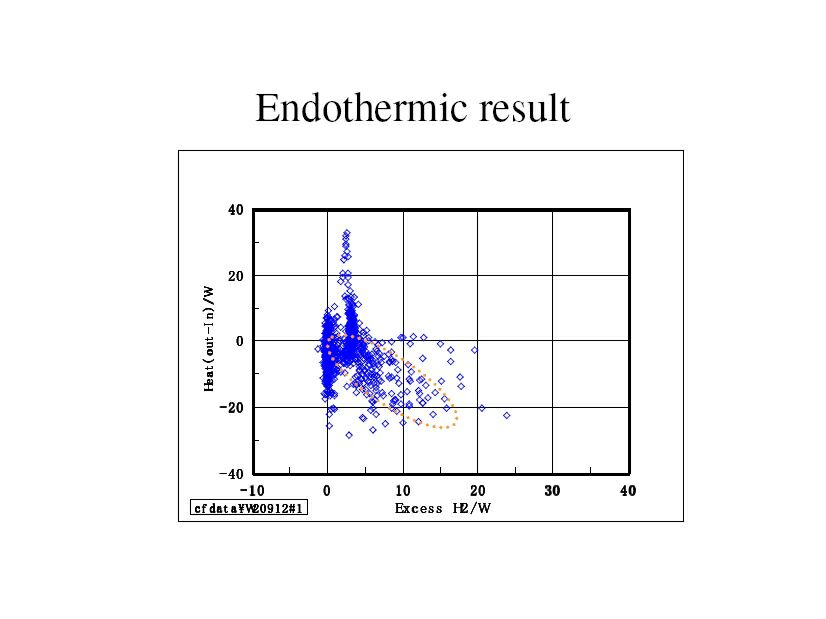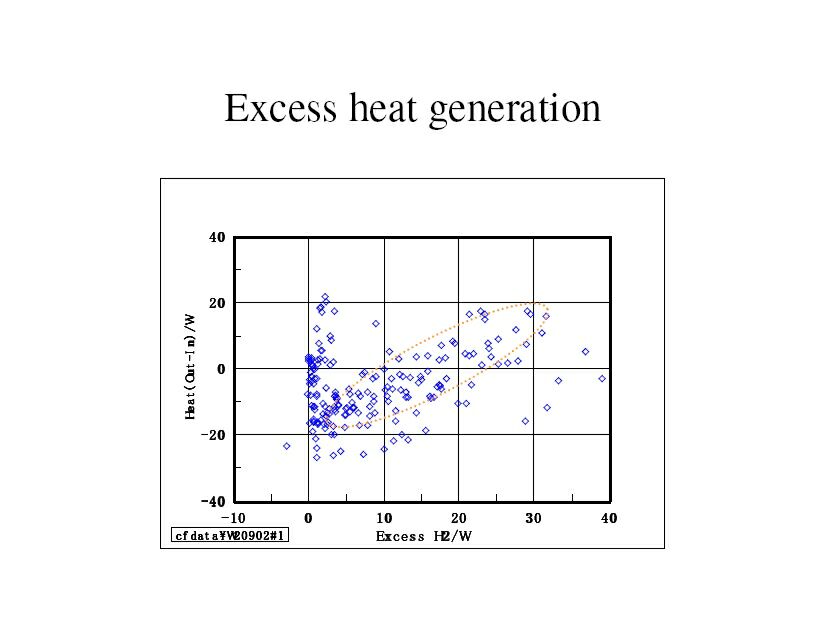

| This shows the change of the ratio between these two values, i.e., current efficiency (e) and the ratio of the oxygen gas to the total generation with hydrogen from the cathode. Here, the e exceeded the unity when the plasma electrolysis started; the gas generation much increased with the input voltage. It reached as 8000% at 350V of input voltage. |

| This shows the e and V relationship. Here, it can be recognized that the e has a tendency of increase with input voltage. Some points of e value under 100V in the figure shows up to twice of the theoretical value of unity; the points were obtained by the result of plasma electrolysis. On the other hand, the e is remaining at unity for all of the other normal electrolysis. It can be expected that if the input Voltage were increased toward several hundred V, then the e would exceed far than the value of unity. |

| This graph also shows the ratio of excess hydrogen to input power. These values were subtracted the faradic hydrogen from the before graph and changed into energy. It shows steep increase with the input voltage. It exceed 10% and sometimes up to 30%. |

| These photos show the various step of the plasma electrolysis. |

| Meanwhile, the heat generation graphs indicated in this figure. This shows no excess during the measurement. However, in the experiment, heat release with the oxygen evolution was not measured. So, it can be only said that in this case the heat balance showed almost 100%. |

| However, apparently figure shows a tendency of the excess hydrogen generation with the negative excess heat. The total endothermic heat was calculated as 6540 J during plasma electrolysis. |

| If there were no excess heat, apparently the points for the excess hydrogen distribute around the no excess heat region like figure, that means the difference between heat out and electric power is zero. |

| Meanwhile, this figure shows other wise relationship, excess hydrogen and excess heat relationship. In the case, the exothermic heat was estimated as 1100J during plasma electrolysis. All of the three cases, I have considered the contribution of excess hydrogen formation. However, apparently, the heat balance was not unity, it was changed by other parameters. |


| The element distributed on the electrode and in the cell is different from the heat generation. This is the brief summary for the difference of heat generation. |